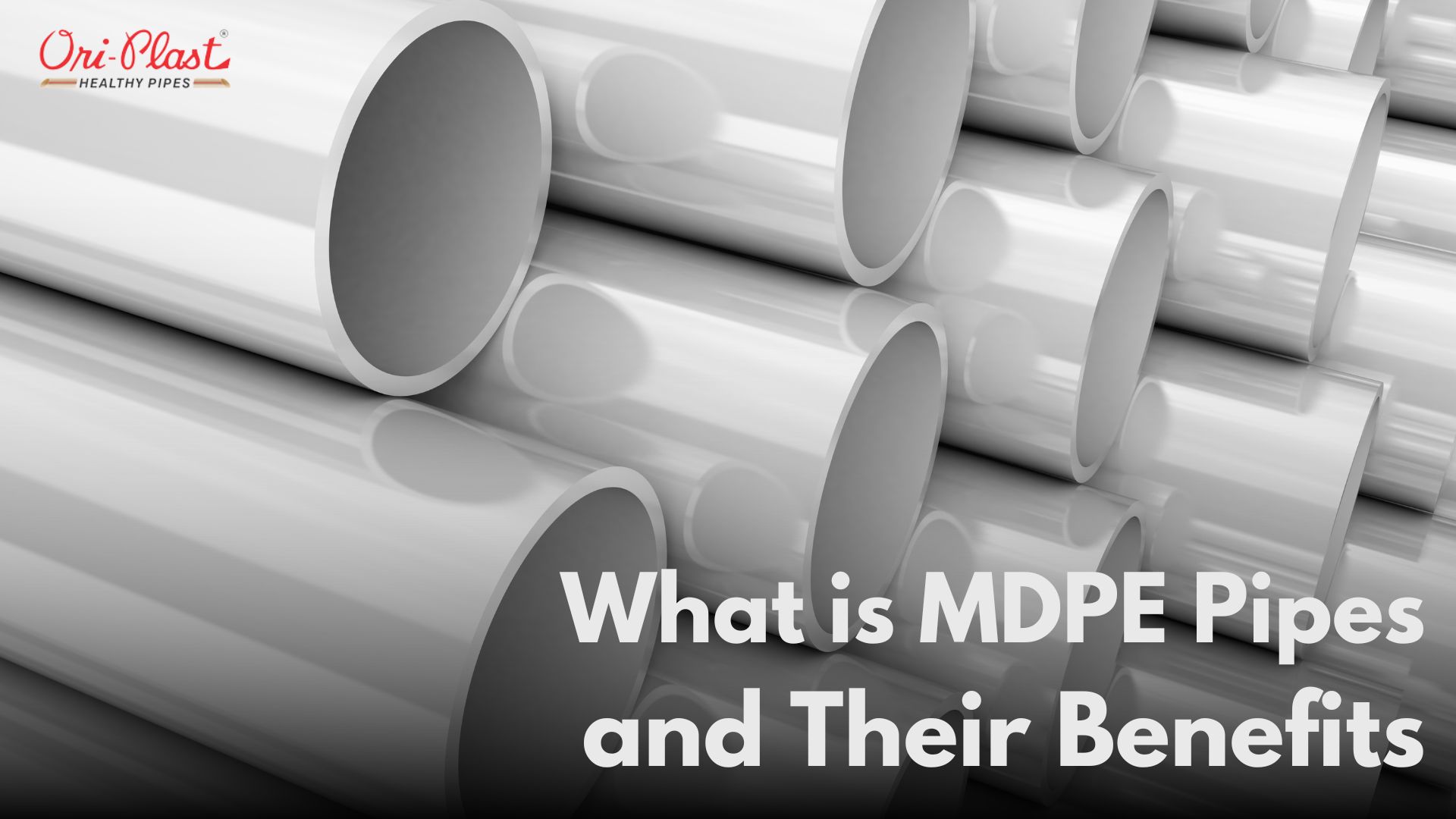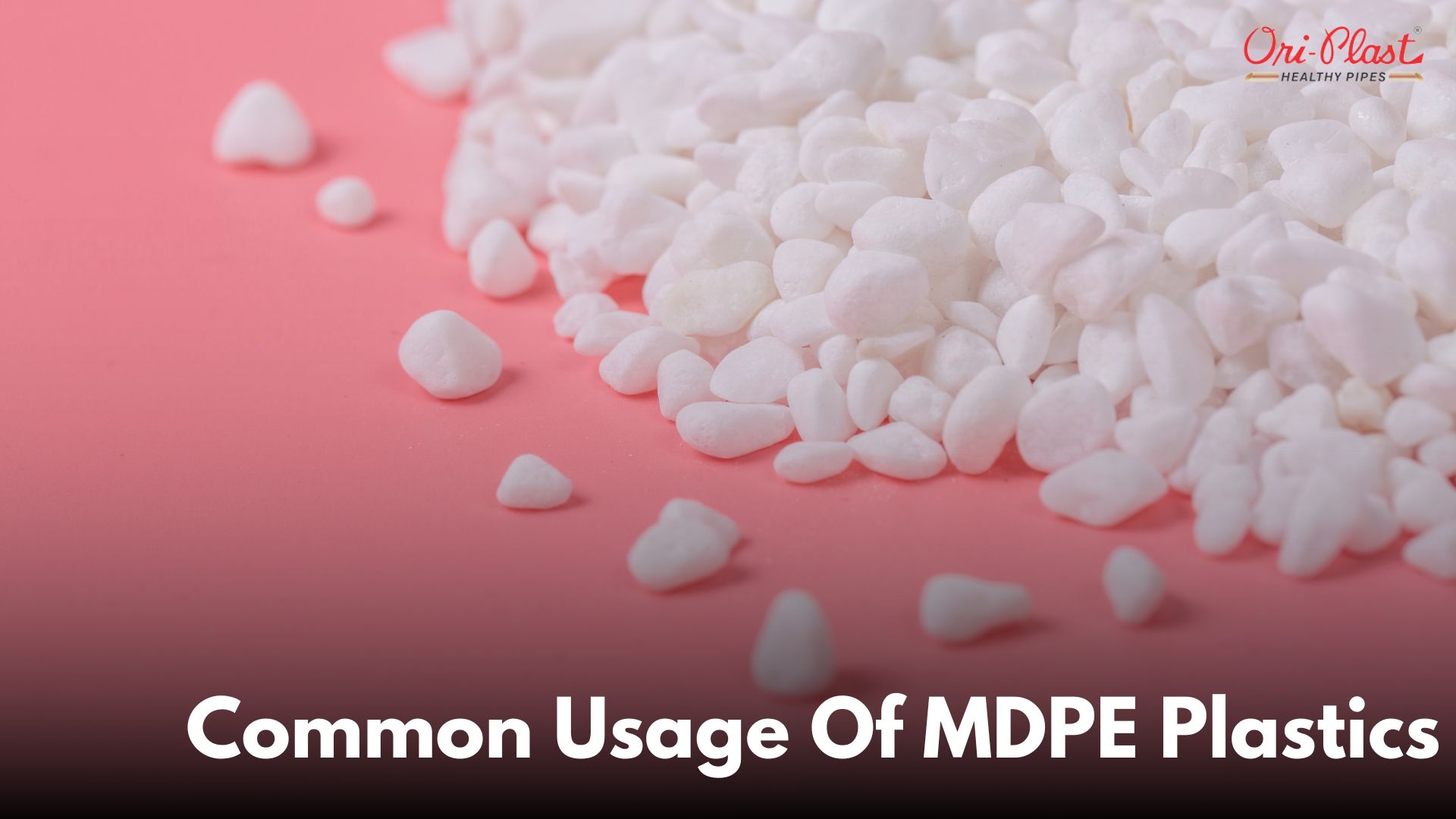When it comes to plumbing and piping systems, the materials we choose can significantly impact the efficiency, durability, and safety of our projects. One such material that has gained popularity in various applications is MDPE or Medium-Density Polyethylene. In this blog, we will explore what MDPE pipes are, their characteristics, applications, and the numerous benefits they offer. Whether you're a homeowner, a contractor, or simply curious about plumbing materials, this comprehensive guide will provide you with valuable insights.
What is MDPE?
Understanding MDPE
MDPE stands for Medium-Density Polyethylene. It is a type of thermoplastic made from the polymerization of ethylene, which is derived from petroleum. MDPE is characterized by its medium density, which falls between low-density polyethylene (LDPE) and high-density polyethylene (HDPE). This unique density gives MDPE its distinct properties, making it suitable for a variety of applications.
Properties of MDPE
MDPE pipes possess several key properties that make them an excellent choice for various piping needs:
- Flexibility: MDPE is more flexible than HDPE, allowing it to bend without breaking. This flexibility makes it easier to install in tight spaces.
- Chemical Resistance: MDPE has good resistance to a wide range of chemicals, making it suitable for transporting various fluids without degradation.
- Low Temperature Resistance: MDPE can withstand low temperatures, making it ideal for cold water applications.
- Lightweight: Compared to traditional materials like metal, MDPE is lightweight, which simplifies transportation and installation.
Applications of MDPE Pipes
Water Supply Systems
One of the primary applications of MDPE pipes is in water supply systems. They are widely used for:
- Potable Water Distribution: MDPE pipes are safe for transporting drinking water, as they do not leach harmful substances.
- Irrigation Systems: Farmers and landscapers use MDPE pipes for efficient irrigation, ensuring that water reaches plants without excessive loss.
Gas Distribution
MDPE pipes are also commonly used in gas distribution networks. Their properties make them suitable for:
- Natural Gas Supply: MDPE is used to transport natural gas safely and efficiently, thanks to its ability to withstand pressure and resist corrosion.
- Biogas Applications: With the rise of renewable energy sources, MDPE pipes are increasingly used in biogas systems for transporting gas produced from organic waste.
Industrial Applications
In industrial settings, MDPE pipes find their use in various applications, including:
- Chemical Handling: Due to their chemical resistance, MDPE pipes are ideal for transporting various chemicals in industrial processes.
- Wastewater Management: MDPE is used in wastewater systems, where its durability and resistance to corrosion are essential.
Benefits of MDPE Pipes
Durability and Longevity
One of the most significant advantages of MDPE pipes is their durability. They can withstand harsh environmental conditions, including extreme temperatures and exposure to chemicals. This durability translates to a longer lifespan, reducing the need for frequent replacements and repairs.
Cost-Effectiveness
MDPE pipes are often more cost-effective than traditional materials like metal or concrete. Their lightweight nature reduces transportation costs, and their ease of installation can lead to lower labor expenses. Additionally, the long lifespan of MDPE pipes means that they represent a better long-term investment.
Easy Installation
The flexibility and lightweight nature of MDPE pipes make them easier to handle and install. Unlike rigid materials, MDPE can be easily cut and joined, allowing for quick and efficient installation. This ease of installation is particularly beneficial in complex projects where time and labor costs are critical factors.
Resistance to Corrosion
Unlike metal pipes, MDPE pipes do not corrode over time. This resistance to corrosion means that MDPE pipes can maintain their structural integrity and performance for many years, even when exposed to harsh chemicals or environmental conditions.
Environmentally Friendly
MDPE is a recyclable material, making it an environmentally friendly choice for piping systems. When MDPE pipes reach the end of their life cycle, they can be recycled and repurposed, reducing waste and the demand for new raw materials.
Safety Features
MDPE pipes are designed with safety in mind. They are less likely to burst under pressure compared to traditional materials, reducing the risk of leaks and spills. This safety feature is particularly important in gas distribution systems, where leaks can pose significant hazards.
Versatility
MDPE pipes are incredibly versatile and can be used in a wide range of applications. From water supply to gas distribution and industrial processes, MDPE pipes can adapt to various needs, making them a popular choice across different industries.
MDPE Pipe Installation
Preparation for Installation
Before installing MDPE pipes, proper preparation is essential. Here are some steps to follow:
- Site Assessment: Evaluate the installation site to determine the best layout for the pipes.
- Material Selection: Choose the appropriate size and type of MDPE pipe for your specific application.
- Tools and Equipment: Gather the necessary tools, including pipe cutters, fittings, and joining equipment.
Installation Process
The installation of MDPE pipes typically involves the following steps:
- Trenching: Dig a trench to the required depth for the pipe installation. Ensure the trench is wide enough to accommodate the pipes and fittings.
- Laying the Pipes: Place the MDPE pipes in the trench, ensuring they are aligned correctly. Avoid sharp bends to maintain flow efficiency.
- Joining the Pipes: Use appropriate fittings and techniques to join the pipes. MDPE pipes can be joined using heat fusion or mechanical fittings, depending on the application.
- Backfilling: Once the pipes are installed, backfill the trench carefully to avoid damaging the pipes. Compact the soil to ensure stability.
- Testing: After installation, conduct pressure tests to ensure there are no leaks and that the system is functioning correctly.
Maintenance of MDPE Pipes
Routine Inspections
Regular inspections are crucial for maintaining the integrity of MDPE piping systems. Here are some tips for effective maintenance:
- Visual Checks: Periodically inspect exposed pipes for signs of damage, such as cracks or leaks.
- Pressure Testing: Conduct pressure tests to ensure the system is functioning correctly and to identify any potential issues.
Cleaning and Flushing
To maintain optimal flow and prevent blockages, it’s essential to clean and flush MDPE pipes regularly. This process involves:
- Flushing with Water: Use clean water to flush the pipes, removing any debris or buildup.
- Chemical Cleaning: For industrial applications, consider using chemical cleaning agents specifically designed for MDPE pipes.
Repairing Damage
If damage is detected during inspections, prompt repairs are necessary. Depending on the severity of the damage, repairs may involve:
- Patch Repairs: For minor cracks or leaks, patching materials can be used to seal the damaged area.
- Pipe Replacement: In cases of severe damage, replacing the affected section of the pipe may be necessary.
Conclusion
MDPE pipes are a versatile and durable solution for various plumbing and piping needs. Their unique properties, including flexibility, chemical resistance, and lightweight nature, make them an excellent choice for water supply, gas distribution, and industrial applications. The benefits of MDPE pipes—such as cost-effectiveness, easy installation, and environmental friendliness—further enhance their appeal.
Whether you're considering MDPE pipes for a new project or looking to maintain an existing system, understanding their characteristics and advantages will help you make informed decisions. With proper installation and maintenance, MDPE pipes can provide reliable service for many years, making them a valuable addition to any plumbing system.
As we continue to innovate and seek sustainable solutions in construction and infrastructure, MDPE pipes stand out as a material that meets both performance and environmental needs. So, whether you’re a homeowner, a contractor, or an industry professional, embracing MDPE pipes can lead to better, safer, and more efficient piping solutions.


